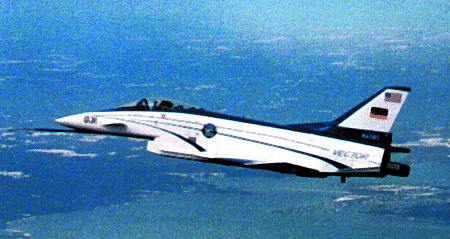Graham Warwick/WASHINGTON DC Andrew Doyle/MUNICH
Flight testing of the Boeing/EADS X-31 has resumed after a six-year hiatus. On 24 February, the thrust-vectoring aircraft was flown for 40min from the US Navy's Patuxent River, Maryland, test centre, launching the US-German VECTOR research programme.

After two to three months of reactivation testing, says US Navy test pilot Cdr Vivan Ragusa, the X-31 will be prepared for the first, "up-and-away" phase of extremely short take-off and landing (ESTOL) testing under the VECTOR programme. This is scheduled to begin by November and will involve high angle-of-attack (AoA) approaches to a "runway in the sky", he says.
The second phase, ESTOL approaches to the runway at Pax River, are expected to begin in November next year.
The VECTOR programme aims to investigate the benefits of using integrated thrust-vectoring control to reduce the runway requirements of fighter aircraft.
Ragusa says approaches at up to 40° AoA, using thrust-vector control, are expected to reduce the X-31's approach speed by 40-50%, possibly as low as 90kt (170km/h). ESTOL approaches will be flown automatically, he says, using special software developed for the X-31's digital flight control system. "The pilot will fly the aircraft into the engagement box, engage the computer and then monitor the approach hands off," he says. The X-31 will fly a curved approach at up to 40° AoA, derotating when it is above the runway, Ragusa says.
Lower approach speeds will reduce aircraft carrier catapult and arrestor gear energy requirements. This, in turn, will reduce the amount of deck area required for take-offs and landings, and increase aircraft "bringback" weights.
EADS says the X-31's first flight from Pax was carried out at speeds of up to 400kt and AoAs up to 30°. Several weeks of flight tests are planned before ESTOL testing can begin, to allow aircraft systems to be fully tested and the US and German test pilots, both of which had never flown the X-31 before, to familiarise themselves with the aircraft's handling.
For the ESTOL phase, the aircraft will be equipped with an EADS-developed flush air data system. This will require replacement of the X-31's nose cone and relocation of the existing air-data probe, says Ragusa.
Source: Flight International




















